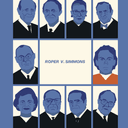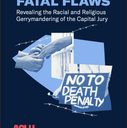
When Ernest Dykes was brought to trial on death penalty charges in Alameda County, California in the mid-1990s, it was reasonably expected that prosecutors and defense attorneys alike would work hard to shape the jury to their benefit. What Mr. Dykes (who is Black) didn’t know until recently, however, was just how far the prosecution would go to curate their ideal jury.
In April 2024, Alameda County, California prosecutors discovered index cards in Mr. Dykes’ case that revealed prosecutors’ illegal efforts to systematically exclude potential jurors based on their race and religion. One Black female prospective juror who was excluded was described as a “Short, Fat, Troll.” Notes about another Black woman stated, “Says race is no issue, but I don’t believe her.” Jewish people were similarly excluded from the jury box. On one notecard for a white male, the prosecutor noted that he “like[d] him better than any other Jew, but no way.” Dykes’ Motion for Resentencing further alleges that the prosecutor in the case created a list solely of Black jurors – evidently to identify one that the prosecution would keep in order to defeat any potential Batson challenge.
Court documents and other evidence now confirm that from the 1980s through at least the late 2000s, Alameda County prosecutors documented jurors by race and religion, as a means of determining who they would exclude from jury service on capital cases. Their actions were in direct conflict with the law and the Supreme Court’s decision in Batson v. Kentucky. The discovery prompted a new review of 34 capital convictions in Alameda County, and the resentencing of 18 people to terms less than death. Fifteen of the 34 cases identified for review involved defendants of color (16 cases are still pending.) In almost three-quarters of the cases eligible for resentencing (25 of 34), the defendants were people of color.
“For decades, capital defense practitioners litigating Alameda County cases have argued that attorneys representing the People had a pattern and practice of racially discriminatory jury selection practices, particularly during …1979 – 2008.”
Prior to the April 2024 discovery, there were allegations that the Alameda County District Attorney’s Office was discriminating against potential jurors. Finding the index cards in Mr. Dykes’ case, combined with subsequent discoveries in other cases, finally demonstrated what defense attorneys had long suspected. The evidence also suggested a culture of misconduct that wasn’t limited to the prosecutor in Mr. Dykes’ case. One former Alameda prosecutor is said to have advised a couple hundred prosecutors at a training to “Never, ever leave a Jewish person on a capital jury.”
Mr. Dykes spent over 30 years on death row before being resentenced last year due to this prosecutorial misconduct. His personal circumstances resemble in many respects those of others who have also been sentenced to death. Mr. Dykes grew up in a dysfunctional home environment characterized by abuse, neglect, and poverty. He was also only 20 years old at the time of the crime, which scientists now say is not old enough for the brain to be fully developed.
In many of the Alameda County resentencing cases, prosecutors routinely struck racially diverse jurors. Prosecutors in Matthew Souza’s case purposefully struck all potential jurors with Native American connections, even if they were otherwise favorable for the prosecution’s case. (Mr. Souza is Native American.) Prosecutors systematically excluded several Black jurors in the case of Franklin Lynch, a Black man convicted of killing three white women. Mr. Lynch was also described by prosecutors as a “human reptile.” Comparing Black people to animals is a historical through line in capital cases and is a tactic that can be particularly effective in cases with all- or nearly all-white juries where there aren’t people of color to challenge these notions.
Before potential jurors even make it to jury selection, they must first be included on jury rolls. In California specifically, researchers note that people of color continue to be disproportionately excluded from jury boxes because of the way in which juror lists are composed. Currently, registered voters and those with licenses from the Department of Motor Vehicles are the only people included on jury rolls. Studies have demonstrated that these lists are not sufficient to ensure defendants have a “fair cross-section” of jurors, with one study finding that 41.3% of jury eligible people are not on registered voter lists.



